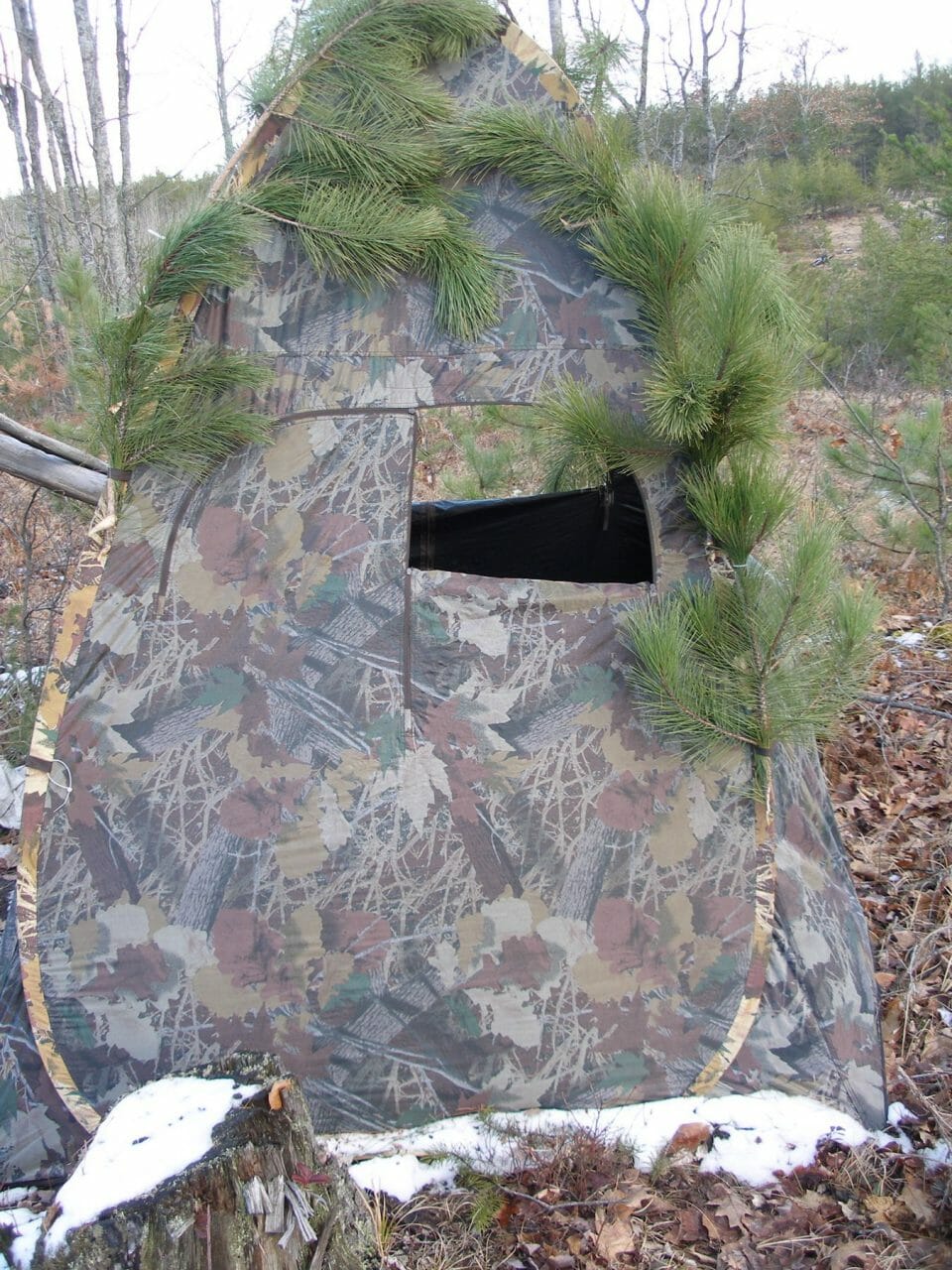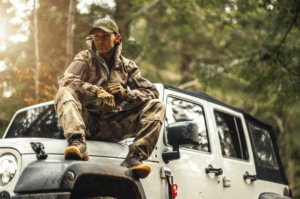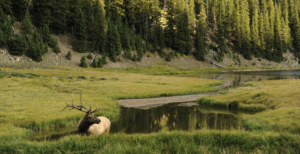
OLYMPUS DIGITAL CAMERA
Utilizing ground blinds or tree stands can offer the crossbow hunter with a plethora of advantages. Firstly, it can greatly increase the hunter’s opportunity to get within shooting range of the prey, which is typically within forty to fifty yards or less. The structures can also keep a hunter out of sight; thus, providing them with a good field of view to watch for prey. Fast, easy to use, and lightweight, crossbows such as the Wicked Ridge Invader G3 are beneficial for the ‘ambush hunting‘ style.
Shooting using a ground blind can be beneficial, but it can also present with different challenges. When hunting feral hogs, if possible, the ground blinds can provide good practice opportunities ensuring that you are prepared for the deer hunting season. This article will provide information on ground blinds and the most common problems that can be experienced when using these particular pieces of equipment.
1. Getting Started
When the ground blind or tree stand is correctly and securely set up, you will need to cut the most suitable shooting lanes to the active feeding areas or game trails you are watching. Take the time to formulate these direct lines of sight, and this will help avoid any potential deflections.
2. Checking Limb Clearance
Whenever setting up, the initial act is to ensure that you have the correct clearance for the bow. There is nothing worse than pulling the crossbow trigger and having one of the limbs come into contact with an obstructive item. It will, needless to say, through the arrow off-course ruining hours and days of preparation; as well as sending patterned animals off target and lost in a single second.
Ground blinds and tree stands are well-known for spoiling hunts when the hunter didn’t enact the hunt before the real thing occurs. This means that if you plan on shooting out of a ground blind, you should practice using the blind and attempt various angles beforehand to confirm your understanding of how much clearance is needed when squeezing the trigger. The same is considered when using tree stands. Shooting rails can be useful, but shooting rails have a reputation of foiling the perfect hunting shot.
If you discover yourself in a situation where you have not shot the crossbow and do not know what the clearance is, it is recommended that you use the arrow as a measuring tool. The majority of arrows are the same width of a bow that is uncocked. If you discover there is a variance, you can mark the arrow with the correct width and utilize it as a measure resource. For example, the Invader G3 crossbow is 22 inches wide when uncocked; however, when set up with a lightweight speedster; it will shoot 20 inch arrows. If set up with a broader head, the length will be ideally comparable representing the bow’s limb width. Hold up the arrow and change angles to determine where it can be shot without contacting any obstacles.
3. Sit And Shoot
There are several large considerations that need to be made when practicing and preparing to shoot from ground blinds and tree stands. To begin, if you do not practice frequently from a sitting position off a structure, then you should consider trying this. When you have your ground blind set up, arrange the seat to prepare the best shot available. Determining the best shot will require consideration of all shot possibilities and shot angles so you don’t become caught off-guard.
Shooting from a single chair when using the ground blind will help with practice, as well as ensuring that you are high enough to view out of the windows. The majority of camp chairs sag, leaving the shooter too low to view the environment or line up a suitable shot. A poor chair can force you to squirm to the edge of the seat or result in you crouching in the blind. This extra movement can alert game to your presence and force you to shoot from unfavorable positions. A quality Swivel Hunting Chair will make a world of difference from the blind.
The same can be said for tree stands. Practice is the most superior line of defence preventing unforeseen problems; therefore, it is important that the tree stand is set up at the same height at which you intend to hunt. It is also recommended that you practice shooting from the tree stand at different angles so you are familiar with all the positions.
Saving time and decreasing movement in the tree stand or ground blind are essential, and it can be done by knowing the effective shooting range before the prey arrives. Using a range finder can help confirm the distance between you and known objects in the shooting lanes; thereby, using them as reference positions. Confirm the farthest distance you are able to shoot, and anything within this range is considered fair game.
Having reference points at ten-yard intervals is beneficial because it will ensure accuracy when a deer arrives, plus you won’t need to move to review the distance – just level the crosshair on your bow and pull. Reference points can be made using any natural features, such as flowers, grass, trees or rocks. If no natural resource is available, you should be able to place a marker as a reference. A marker can come in the form of flagging tape, broken branches, or even sticks. If you are placing markers, it is essential that this is done before the hunt; you do not want to spread scent alerting deer on the path.
5. Practice Using 3D Targets
3D targets are highly beneficial options to show you how to shoot at angles, as well as where the crossbow arrow will enter and exit the animal. It is vital that you understand all the angles, particular when hunting from a raised position. Picturing the points can help you focus your crosshair and shoot the target from various angles.








